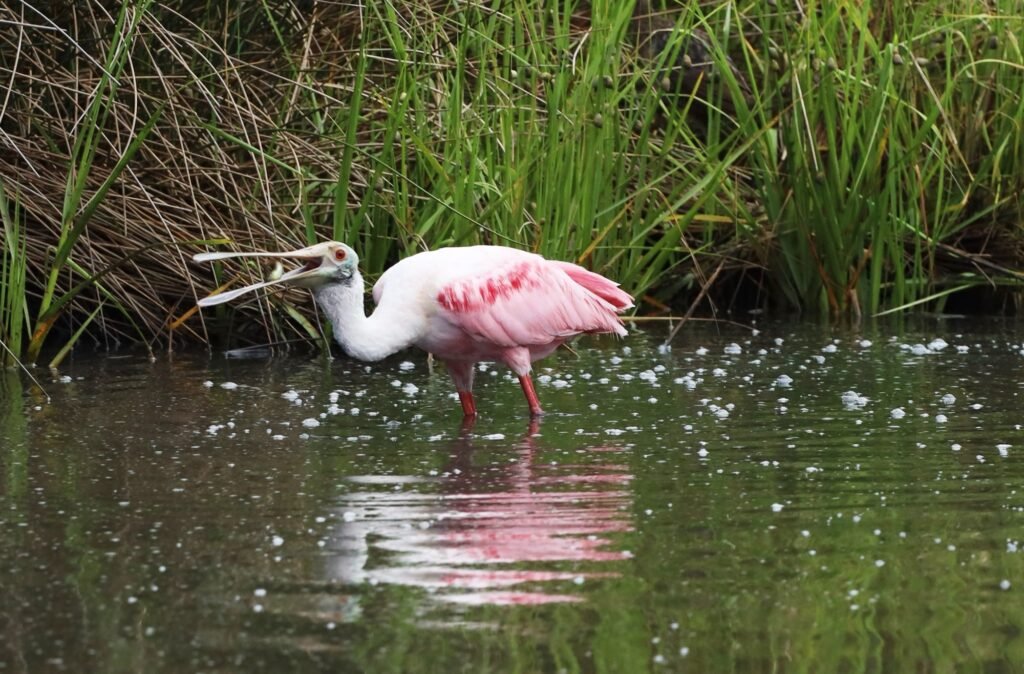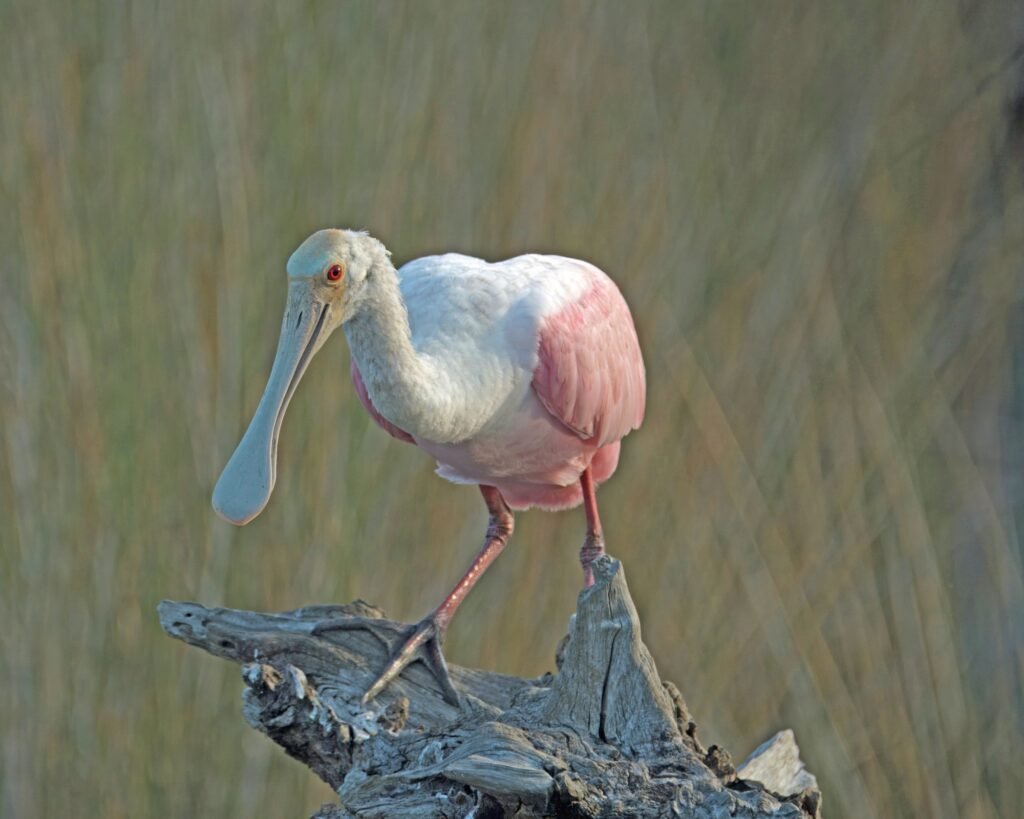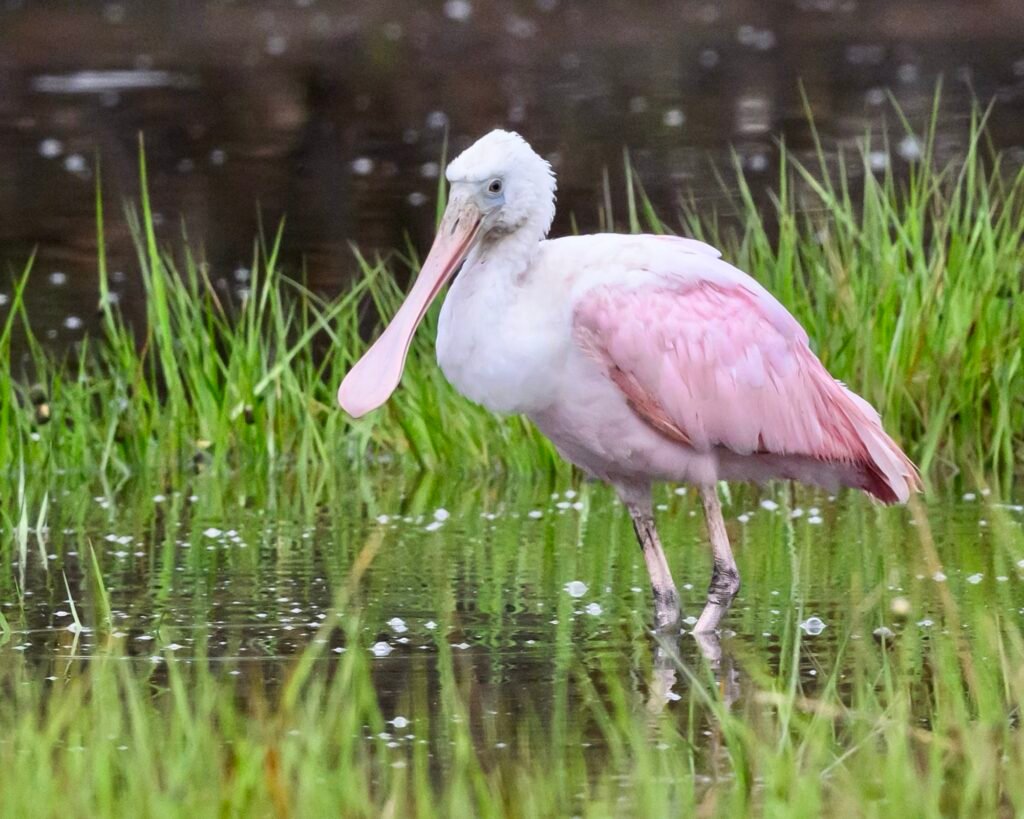Roseate Spoonbill – Platalea ajaja
Length: 32″; Wingspan: 50″; Weight: 52oz.
The next time you see a Roseate Spoonbill, check out the long, flat, spoon shaped bill. Spoonbills feed by walking in shallow, muddy bottom water and tidal ponds foraging by sweeping their bill from side to side with it slightly open to sift up small fish, shrimp, mollusks and snails. To locate prey, Roseate Spoonbills have sensitive nerve endings and touch receptors in their bill, which they then snap closed to pull the prey out of the water. Similar to flamingos, Roseate Spoonbill’s pink color comes from the food it eats.
Spoonbills are very social birds and spend most of their time with other Spoonbills or in the company of other wading birds. It is an unusual looking large wading bird with pink plumage, a long flat grayish spoon-shaped bill and an un-feathered greenish gray colored head which becomes golden buff during breeding. The neck, chest and upper back are white and the adult has beautiful red wing coverts. They have long red legs adapted to walking and wading in wetlands. They also have red eyes. Their nostrils are located at the top of the bill, making it possible for the bird to breathe while the bill is under water.

Roseate Spoonbills nest in colonies with Ibises, Storks, Cormorants, Herons and Egrets. Males and females pair off for the breeding season and build a nest together as the female builds the nest with material brought to her by the male. Their nests are built in trees typically 6-15 feet above the water. The nest is built of sticks lined with grass and leaves with a deep hollow in the center. The female lays 2-4 eggs, whitish with brown markings, and the chicks hatch in about 3 weeks. The new chicks fledge in 35-42 days and are fed by mom and dad until they are about 6-8 weeks old. Young birds have white feathers that have a slight pink tinge on their wings. They reach maturity at 3 years of age. The beaks of chicks are straight and the spoon-shape grows as the chick develops. Nestlings are many times attacked and killed by Turkeys, Vultures, Bald Eagles, Raccoons and even Fire Ants.
They reside along coastal Southeast US and West Indies through Mexico and Central America.
Plume hunters almost eliminated Spoonbills in the 1800’s when the wings of this beautiful creature were made into fans and their feathers for hats. It’s ironic that they were hunted for their plumage: their feather color fades rapidly, so the colorful fans and hats made from their feathers didn’t last very long. The biggest threat to Roseate Spoonbill population today is the loss of their habitat. Due to increased human population, wetlands have either been drained or polluted forcing these birds to nest/live in much more vulnerable sites. In addition, some populations show high levels of pesticide levels in their eggs but they do not appear to be significantly impaired by egg shell thinning at this time.
The oldest wild Roseate Spoonbill was discovered in the Florida Keys in 2006. The bird had been banded in 1990, and was an amazing 16 years old. The previous known longevity record for the species was 7 years.
A group of Roseate Spoonbills are collectively known as a “bowl” of Spoonbills and hatchlings are called “teaspoons.”
If you would like to know more about this bird, click here.
Submitted by Seabrook Island Birders
Feature photo by Maryann Rollins



